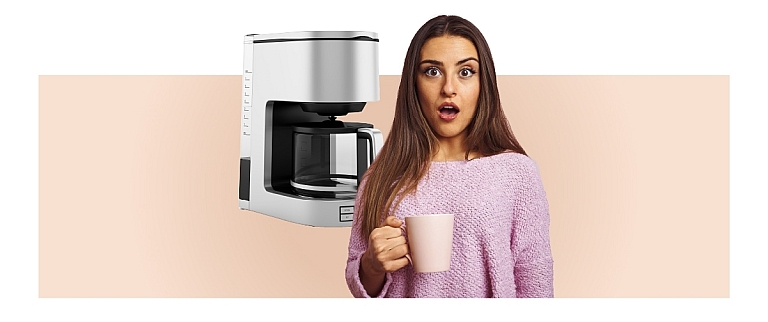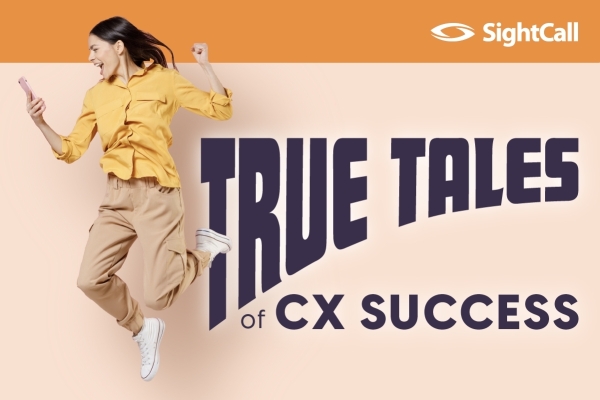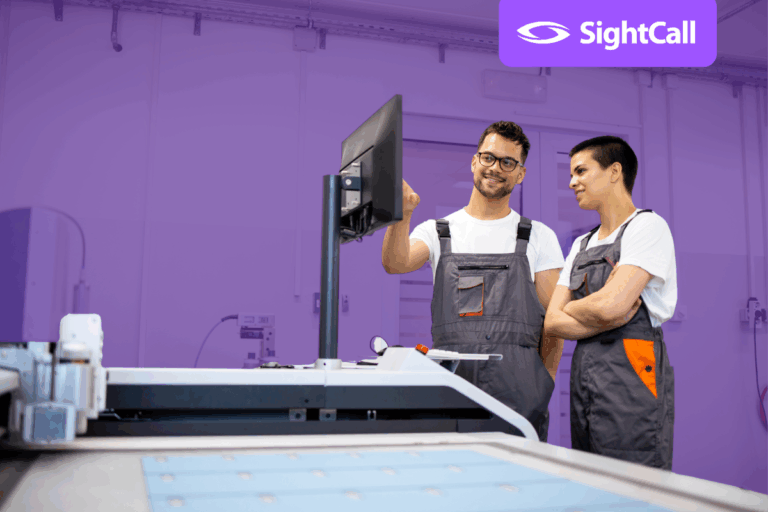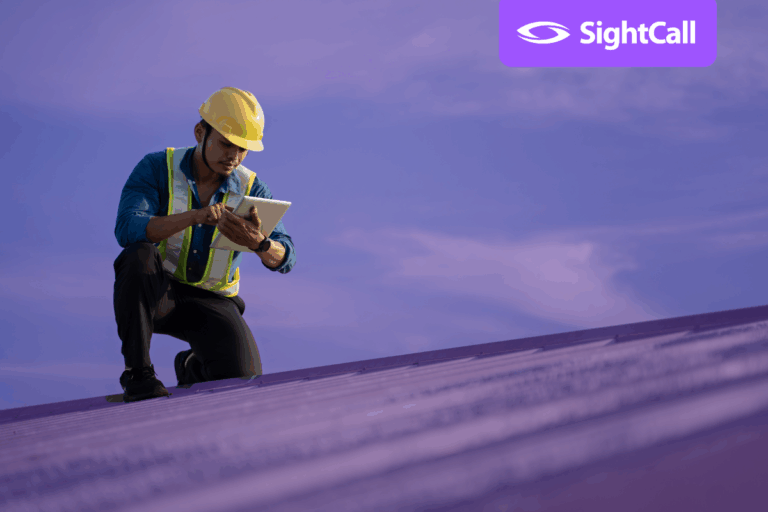In an era defined by technological innovation, the customer support landscape is undergoing a remarkable evolution, especially within the realm of electronics and home appliances manufacturing.
Visual assistance technology is reshaping the way manufacturers interact with their customers. Contact centers are trading confusing IVR menus, frustrating phone calls and endless email exchanges for the clarity of video and intuitive, digital self-service.
“Seeing what the customer sees” is giving service organizations new capabilities and context that can supercharge their efficiency.
Manufacturers who have tapped into the power of visual assistance are forging a direct, real-time connection with customers, allowing them to troubleshoot issues, provide step-by-step guidance, and enhance the overall support experience.
SightCall has been fortunate to work with industry trailblazers who are flipping the switch on traditional support and sparking a customer service revolution!
Here’s how SightCall helped transform customer service for three major manufacturers.

The Case of the Disappearing Small Talk: How to Lower AHT and Boost FCR with Pre-Call Self-Service Sequences
People don’t usually reach out to customer service when things are going well.
If an agent and a customer connect, it’s usually to solve a problem.
They want help and they want it fast.
When someone’s normal routine is upended because the dishwasher isn’t washing dishes or the dryer isn’t drying, all that matters is getting right to the part where you fix what’s wrong.
That’s why one of the biggest names in home appliances came to us with a question: How can we get a head start on customer service calls?
The Challenge: Reduce Average Handle Time (AHT) and Improve First Call Resolution (FCR)
The Fortune 500 appliance manufacturer wanted to make their call center interactions more efficient.
Customer service agents were spending too much time per call identifying the person, product, or problem. Sometimes they were even accepting calls from customers who misdialed, had irrelevant questions or were calling about a different brand of appliance altogether!
They wanted a better way to deflect the calls that didn’t matter and get right to the point on the calls that did.
We helped them create an easier, faster way to collect key information BEFORE launching the human-to-human customer service conversation.
The Solution: Empower the Customer with Self-Service Automation
What we built for them is a simple, streamlined pre-call experience for collecting key data that gives agents clarity before starting the call.
SightCall Digital Flows are a one-click, simple set of digital instructions that customers use to self-submit information.
Here’s how it works:
- A customer who initiates a support request using Live Chat is sent a link to a Digital Flow as an App Clip (no download required).
- The Digital Flow allows the customer to enter their name, scan the serial number, and state the issue/reason for their call, before engaging with a call center resource.
- Once a support agent is ready to start the call, they can do so with contact info and context at hand.
The Results: Faster and More Efficient Customer Service
SightCall Digital Flows help speed up the customer service process. Beginning with a self-service action eliminates the time that agents would spend collecting preliminary information.
Service experts can start working immediately on steps toward resolution.
The direct benefits?
- Reducing call times by 1-2 minutes minimum
- Improved first-time resolution
- Higher customer satisfaction (CSAT scores)
There are even added layers of efficiency to the company’s customer service stack because SightCall’s Visual Support is always just a click away.
Within the same service conversation, customers always have the option of escalating from audio to video.
By combining self-service automation with visual support, the company transformed both the customer AND agent experience for the better.
RELATED READ: TRANSFORM CALL CENTER EFFICIENCY WITH SELF-SERVICE TRIAGE

The Case of the Boomerang Coffee Machines: How to Reduce Product Returns with Visual Engagement
When one of the world’s most respected appliance manufacturers creates a luxury line of coffeemakers, the last thing they want is for their machines to come back before customers brew the first espresso.
But that’s just what happened.
And here’s what they did about it.
The Challenge: Reduce Product Returns
While customers were eager to spend thousands for the company’s high-end home brewing machines, something was going wrong between the point of purchase and the first cup.
Customers struggling with set-up and installation issues were either giving up on support or bypassing it altogether.
As a result, the company saw a growing number of frustrated buyers who found it easier to put the coffee machine back in the box and return it to the store.
The number of product returns became a cause for concern.
The manufacturer incurred the high costs (and wasted hours) of shipping the coffee machines back to evaluate each return.
They had to take a hit on products deemed “faulty” that were perfectly functional because returned coffee machines (no longer technically “new”) could not be sold at full price.
The company needed a solution to help reverse this expensive trend.
The Solution: Give Agents Eyes on Site
The company leveraged SightCall to give their support agents a visual advantage when it came to customer service.
If a customer was having issues with coffee machine set-up or installation, an agent could send a link and connect instantly via video to the customer’s smartphone or tablet.
Experts working from anywhere could guide customers step-by-step using enhanced video with the ability to annotate, scan serial numbers and share high-resolution photos and videos.
The Results: Seeing More Solves Faster
Customers embraced the visual engagement offered by support.
Agents were able to provide clear and immediate visual instructions for proper set-up, installation and operation.
The machines got connected and the coffee beans got ground.
Customer cups got filled with espressos, cappuccinos and lattes.
And the manufacturer reduced the rate of product returns by 35%!
RELATED READ: ELEVATING THE CUSTOMER EXPERIENCE WITH SMART INSTALLATION

The Case of the Troubled TV Techs: How Supporting Third-Party Technicians Boosted CSAT and FTFR
A global leader in consumer electronics and entertainment with six major business segments and over 110,000 employees worldwide faced a challenge in their TV division.
Even though they are a huge company, there are considerably more of their televisions out in the world than there are service experts. That’s why the company relies heavily on an extended network of third-party technicians.
While this is common practice for consumer electronics companies, the big problem was communication.
The Challenge: Improve Customer Satisfaction with Service Calls
The third-party technicians were rarely specialists in their brand.
In fact, most of them probably weren’t even TV experts. One field service freelancer could spend all morning working on washing machines and dishwashers before rolling up his sleeves to troubleshoot an 85″ smart TV later that afternoon.
On-site techs who were less “brand-savvy” had to call in for assistance.
This meant company experts in the contact center had to talk technicians through steps and solutions over the phone or through a series of emails and texts.
It was an inelegant solution that slowed the repair process way down and often resulted in delays and multiple service visits to resolve the issue.
Customers were less than thrilled by the sluggish service and the company saw that frustration reflected in dwindling CSAT and NPS scores.
It didn’t help that the pandemic completely changed consumer expectations.
Stuck at home for months on end, people learned to seek out companies and service providers that could make their lives easier and solve problems faster.
They didn’t care WHY the person sent to fix their TV couldn’t fix it. They just wanted to wrap up the final season of Game of Thrones ASAP.
The company needed a much better way to connect in-house experts with on-site service pros.
The Solution: Showing Instead of Telling
The company implemented SightCall Visual Support between their contact center and field technicians.
Now, when an on-site issue requires an expert eye, agents can initiate a SightCall video session. The Visual Support platform gives customer service agents the power to see for themselves and allows them to provide clear, visual instructions to the technician.
Brand experts can be just as effective as if they were there on-site. Enhanced visual tools allow the remote agent to capture data on the call including photos, video, and serial numbers. Replacement parts can be verified, ordered, and shipped at the click of a button.
The Results: Less Frustration, More Satisfaction
The company has reported that Visual Support pays for itself.
It has significantly reduced their average handle time, improved the first-time fix rate, and helped clear up customer issues… which boosted their customer satisfaction numbers… which was the whole reason they reached out to SightCall in the first place!
The company has since expanded visual support beyond the contact-center-to-field-tech pipeline, by using SightCall to connect SMEs directly to consumers.
And the feedback is that agents using SightCall have already seen the value in remote video support.
Instead of playing phone and email tag with customers who have submitted incomplete service requests, agents can use Visual Support to immediately verify missing information, scan serial numbers and identify replacement parts.
For contact center service teams, this also reduces errors in product returns and helps close open tickets faster.
Transform Customer Journeys with Visual Assistance
Schedule a free demo today to see exactly how SightCall can help



